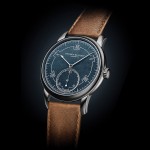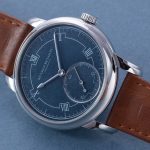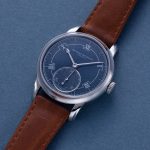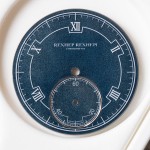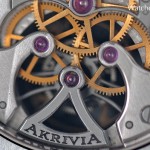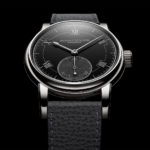A Very Detailed Look at the Akrivia Chronomètre Contemporain Prototype
Rexhep Rexhepi's masterpiece.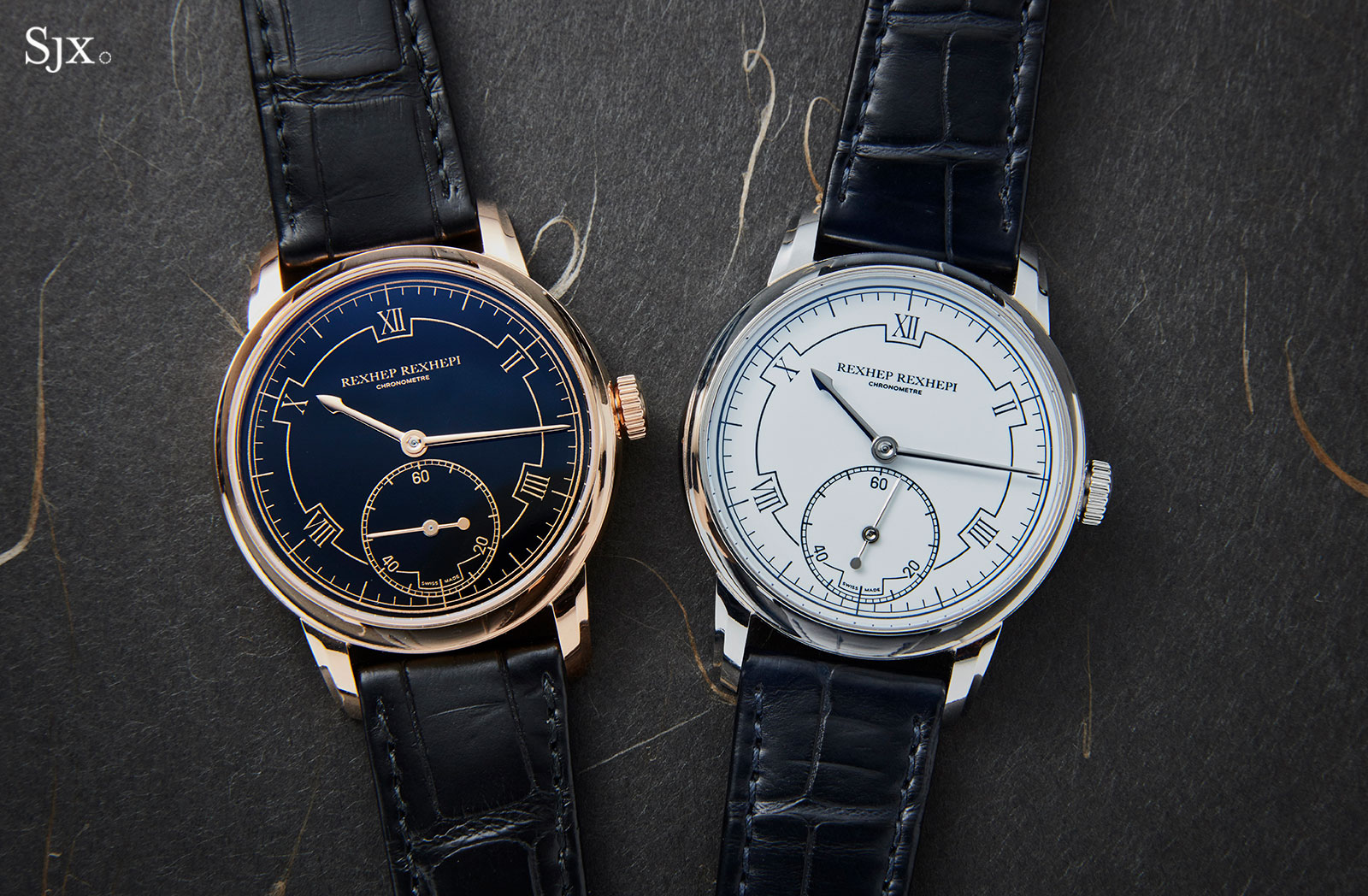
When I first encountered Akrivia three years ago, the watches felt paradoxical – large, modern cases that tried hard to be different, standing in stark contrast to the hand-finished movements. While the watches had shortcomings, the technical and artisanal skill was obvious, despite the Kosovar brothers behind Akrivia – Rexhep Rexhepi and Xhevdet Rexhepi – both being just shy of 30 years old.
The watches demonstrated the duo might be the next big thing, but independent watchmaking is perennially suffering from the up and coming. Nascent independent watchmakers are as likely to fall off a cliff in myriad ways as they are likely to actually become the next big thing.

Akrivia’s new Chronomètre Contemporain is proof of the positive, that the brothers are the real deal. The fact that the watches pictured are the first ever prototypes, yet are exceptionally good, reinforce the point.
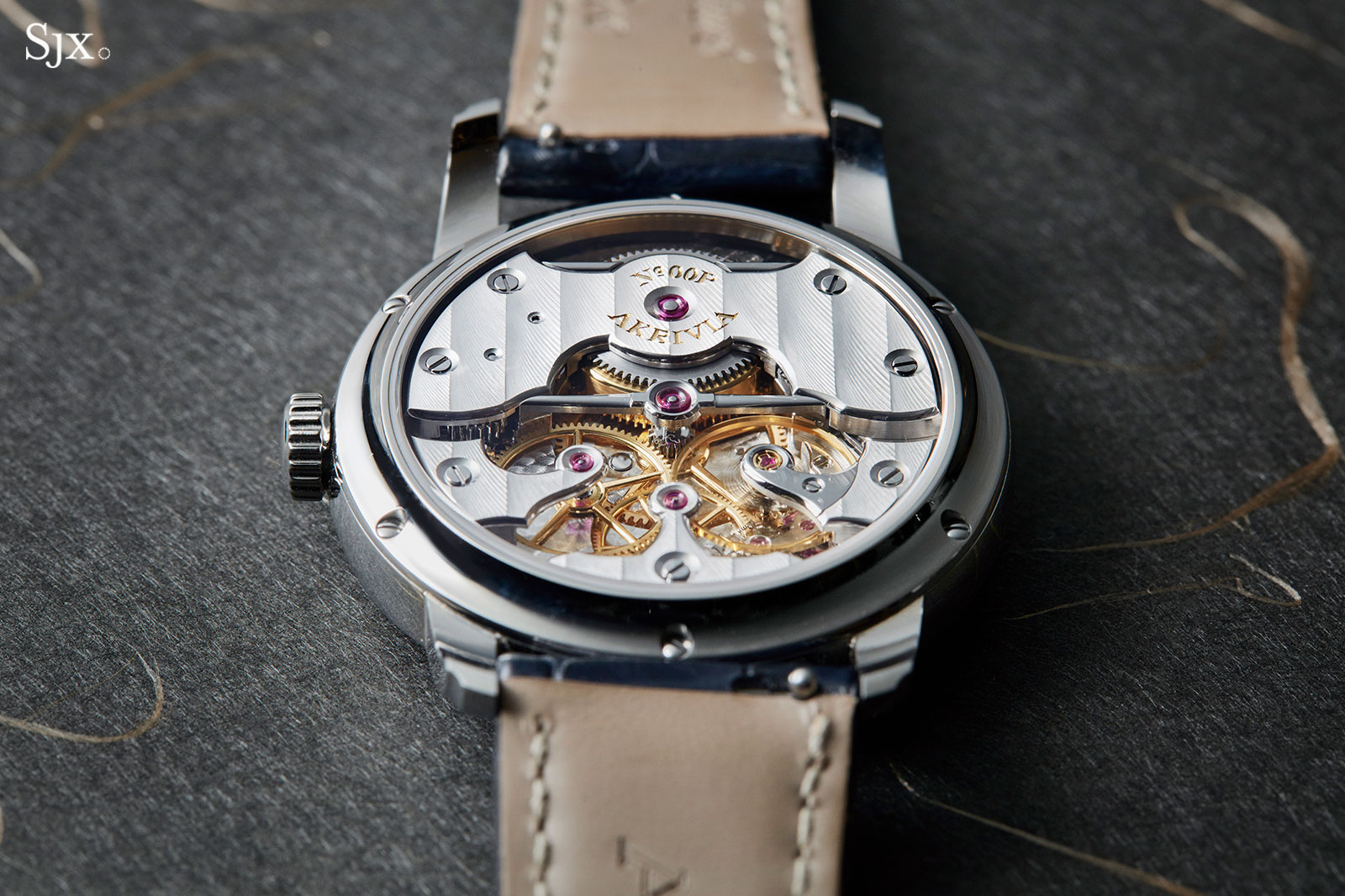
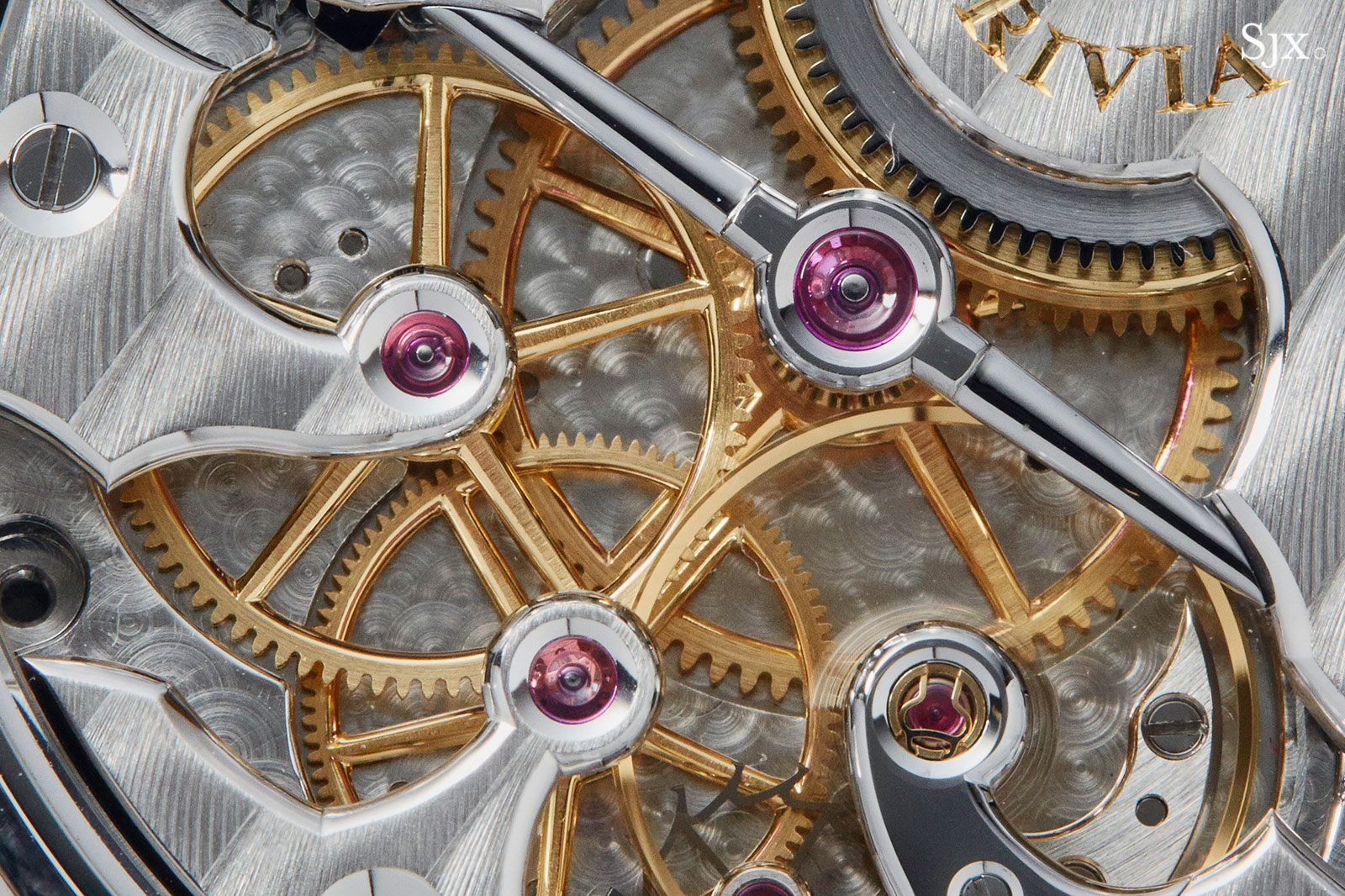
Conceived at the suggestion of Singapore retailer The Hour Glass over the course of 2017, the Chronomètre Contemporain is a striking departure from Akrivia’s earlier work. The look channels the style of mid 20th century Swiss chronometer wristwatches, boosted by a restrained aesthetic flair on the dial and case.
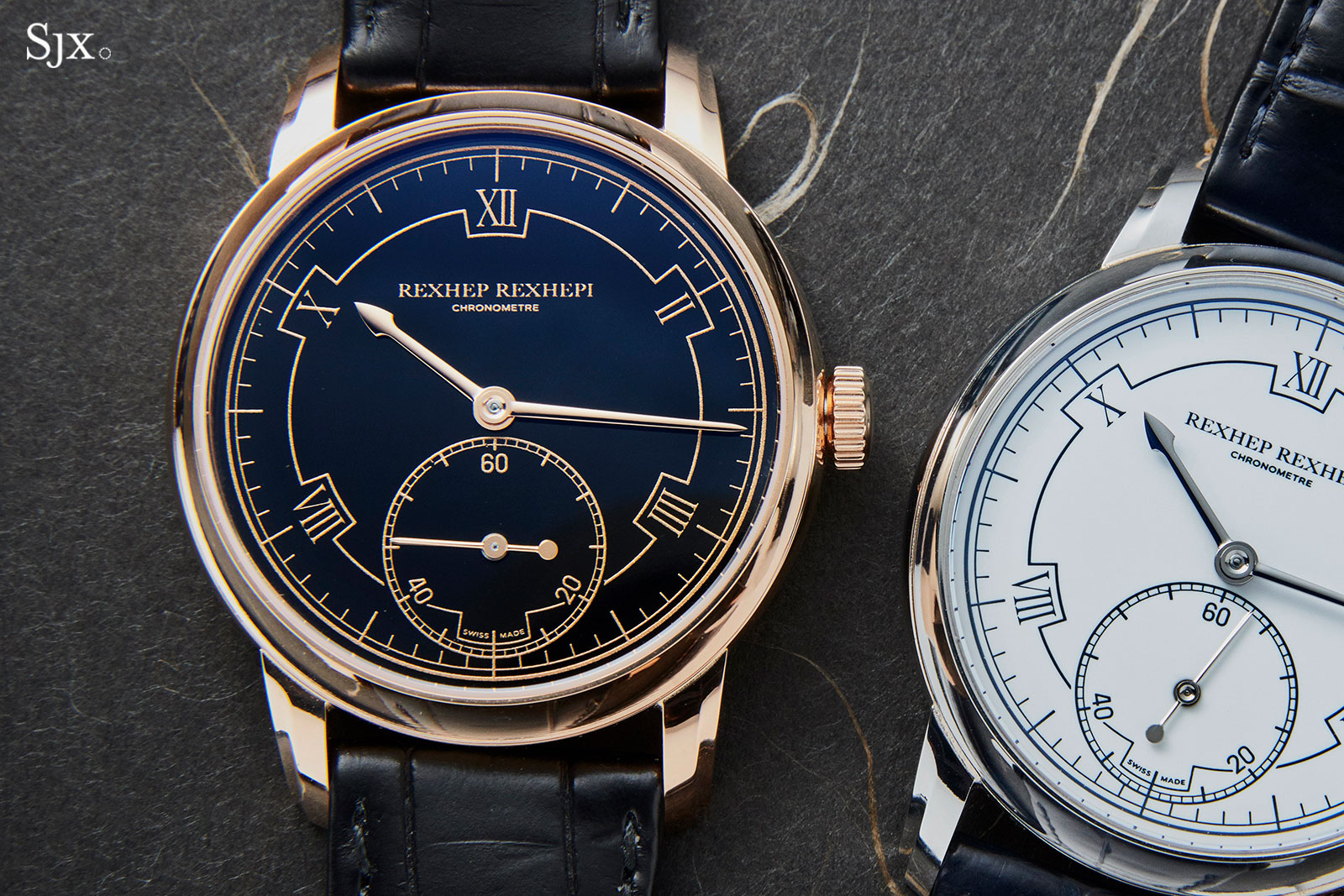
While the Chronomètre Contemporain is still an Akrivia watch, the dials will be signed “Rexhep Rexhepi”, since the watch is largely the brainchild of Rexhep, the elder of the two brothers.
The dials are vitreous enamel, designed in a style that evokes early 20th century watchmaking. They are made by Geneva enameller Emaill’Art, a workshop that has done dials for Vacheron Constantin and Laurent Ferrier. The proximity of suppliers reflects the Rexhepi brothers’ desire to source as much as possible in Geneva.
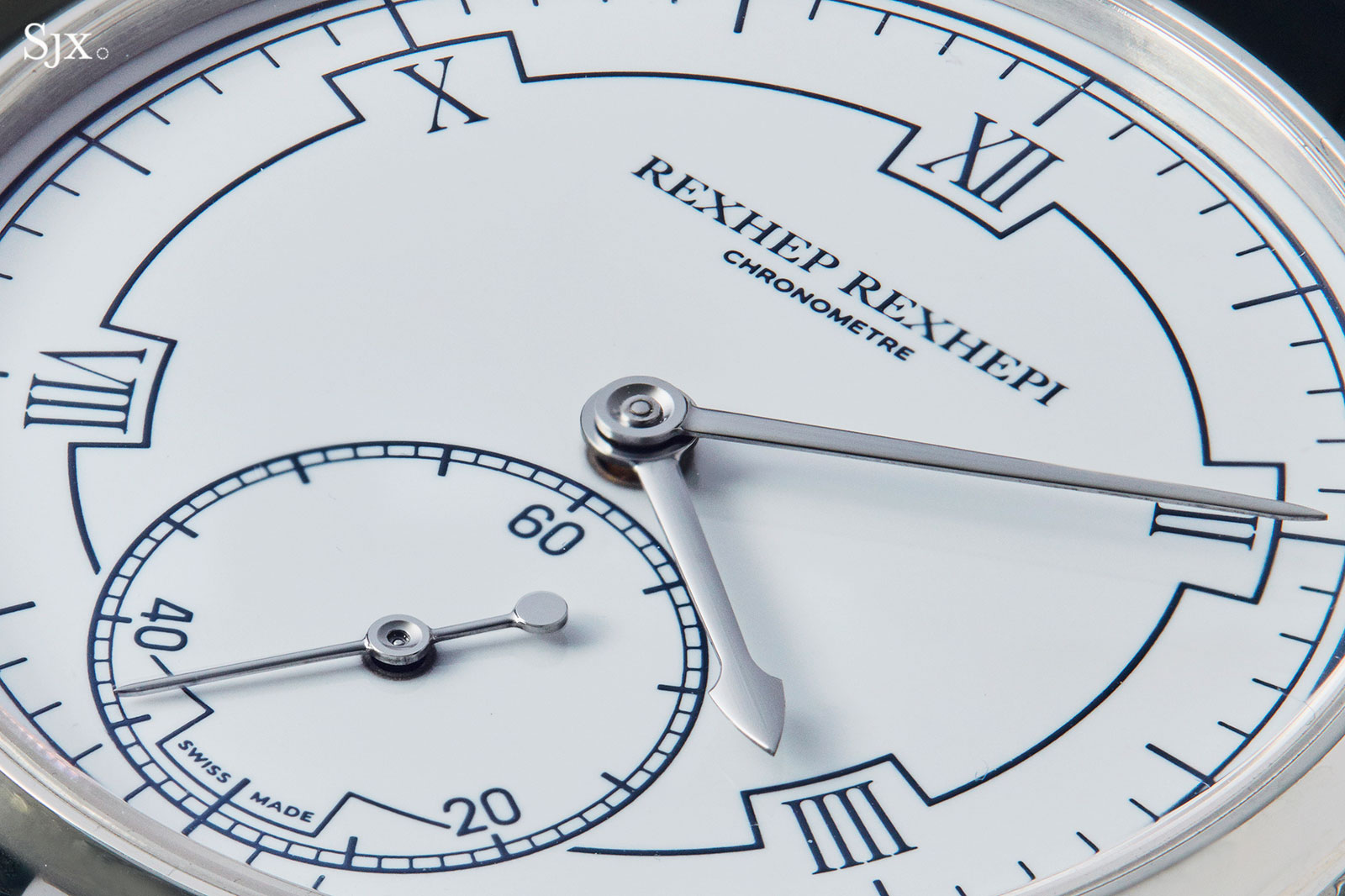
Consequently, the hands are produced by hand in the Akrivia workshop. While obviously hand-made, the hour hand could do with being larger. That, along with several other elements of the dial, might change in the final production watches – a two-piece dial with a recessed seconds may be on the cards – but the overall dial design will remain the same.
The ghost of Emile Vichet
Properly sized for this style of watch, the case is 38mm wide and 9.5mm high, with an elegant concave bezel and back. Both the bezel and back flare outwards at six and 12 o’clock, a feature taken from Akrivia’s original case design.
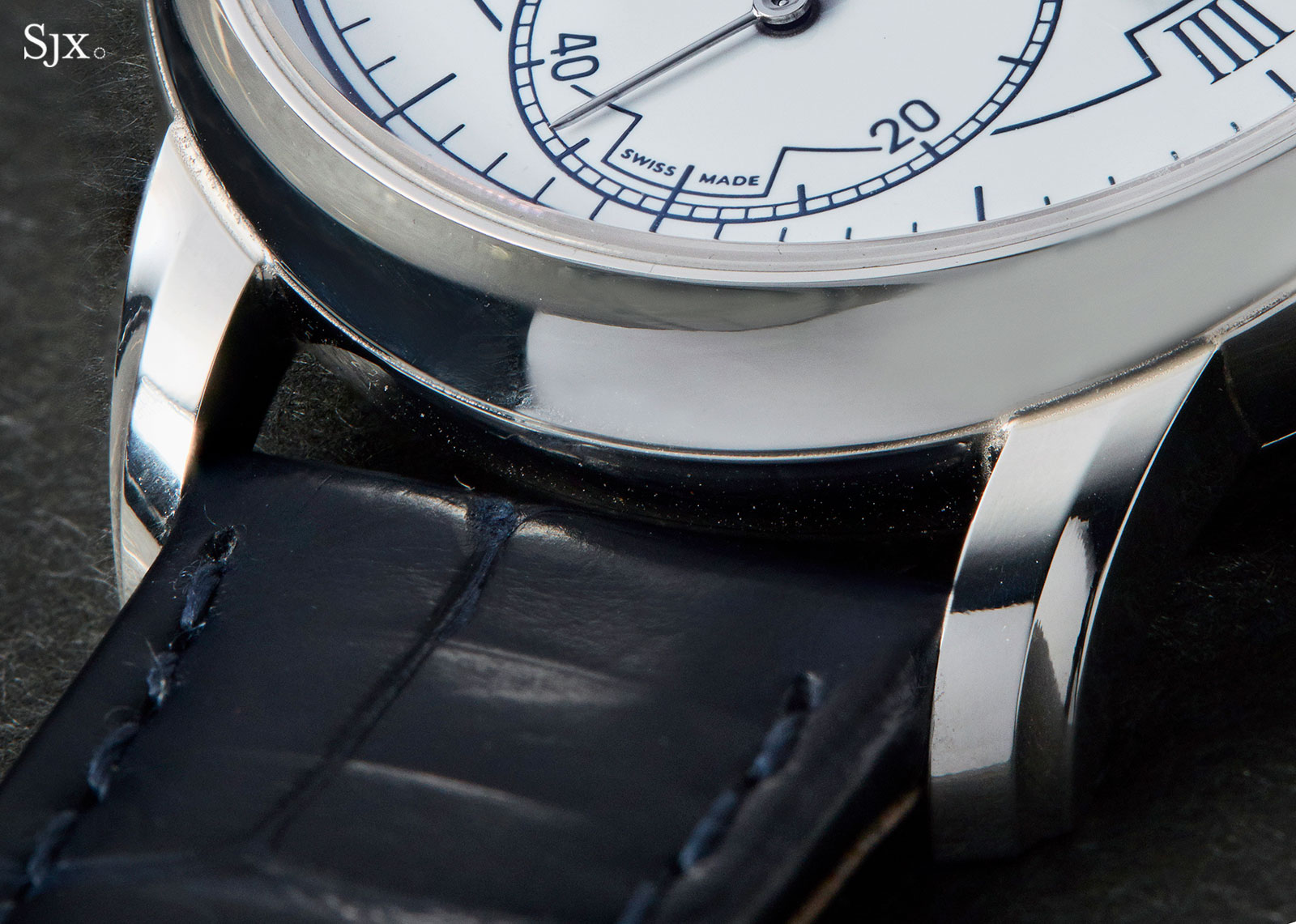
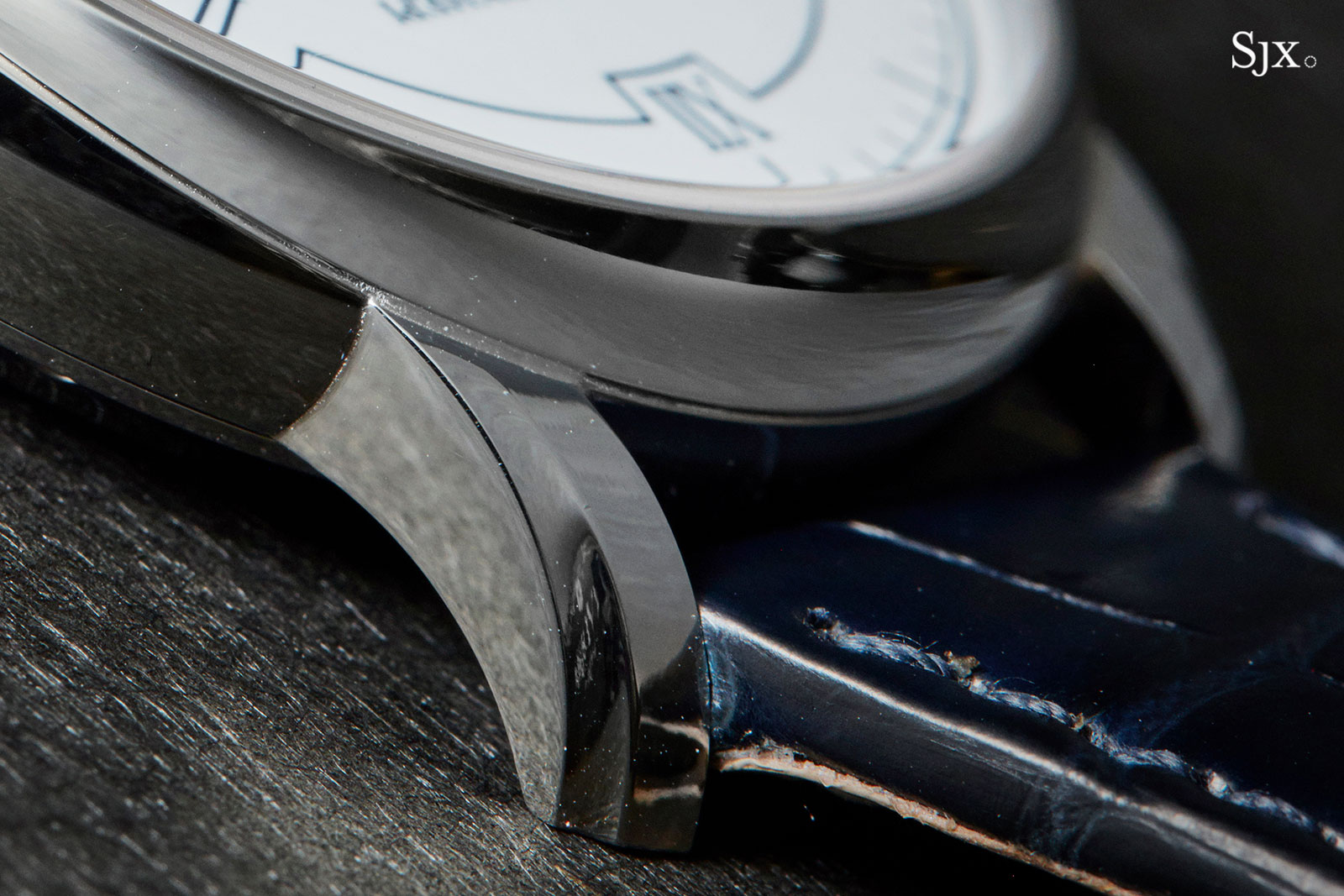
The lugs are lengthy and curved downwards, taking inspiration from the arched lugs of 1950s Patek Philippe cases made by Emile Vichet. Their length means when placed flat on a table, the watch sits on the underside of the lugs, rather than the case back, just as it is with vintage Vichet cases.
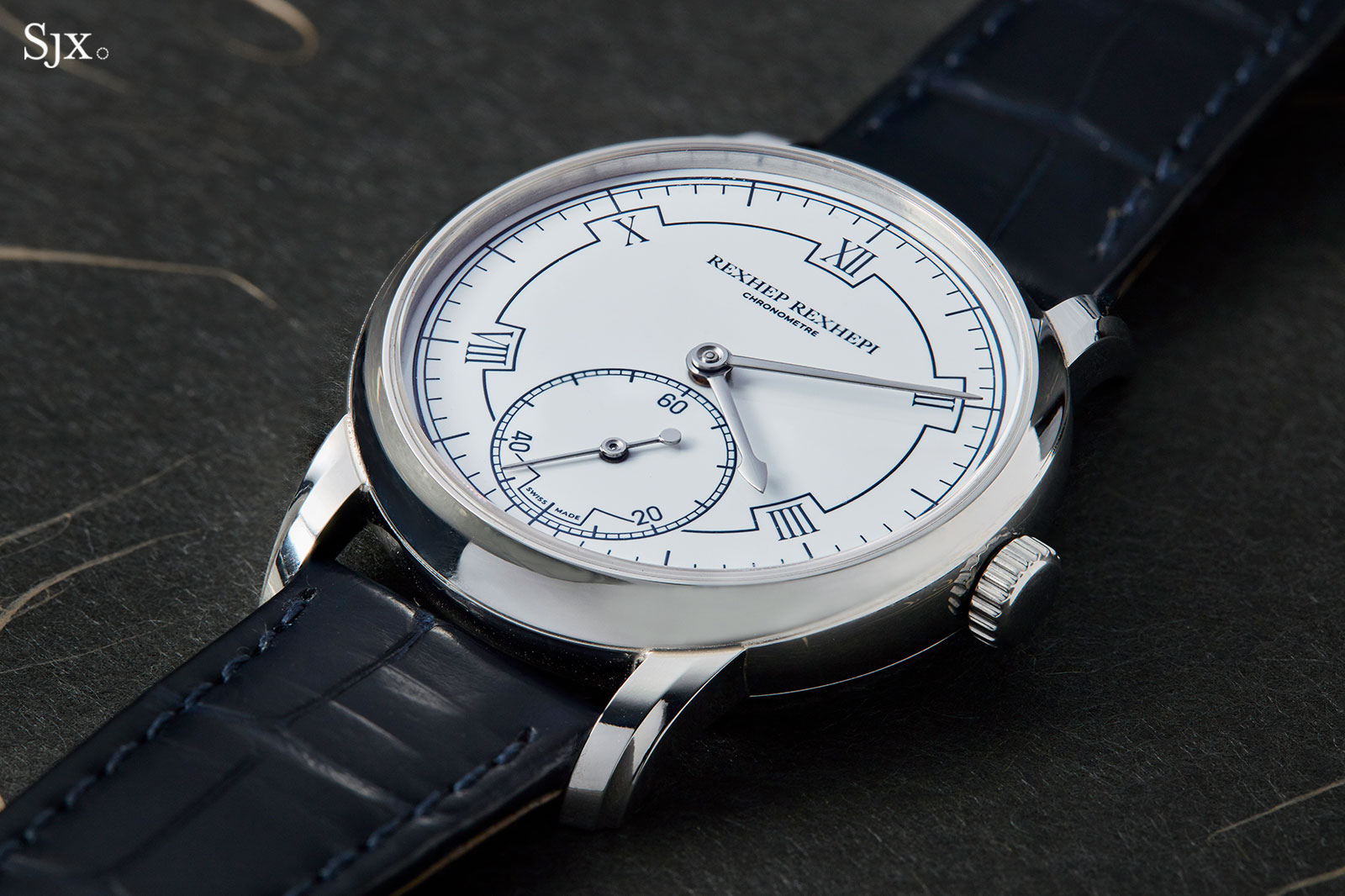
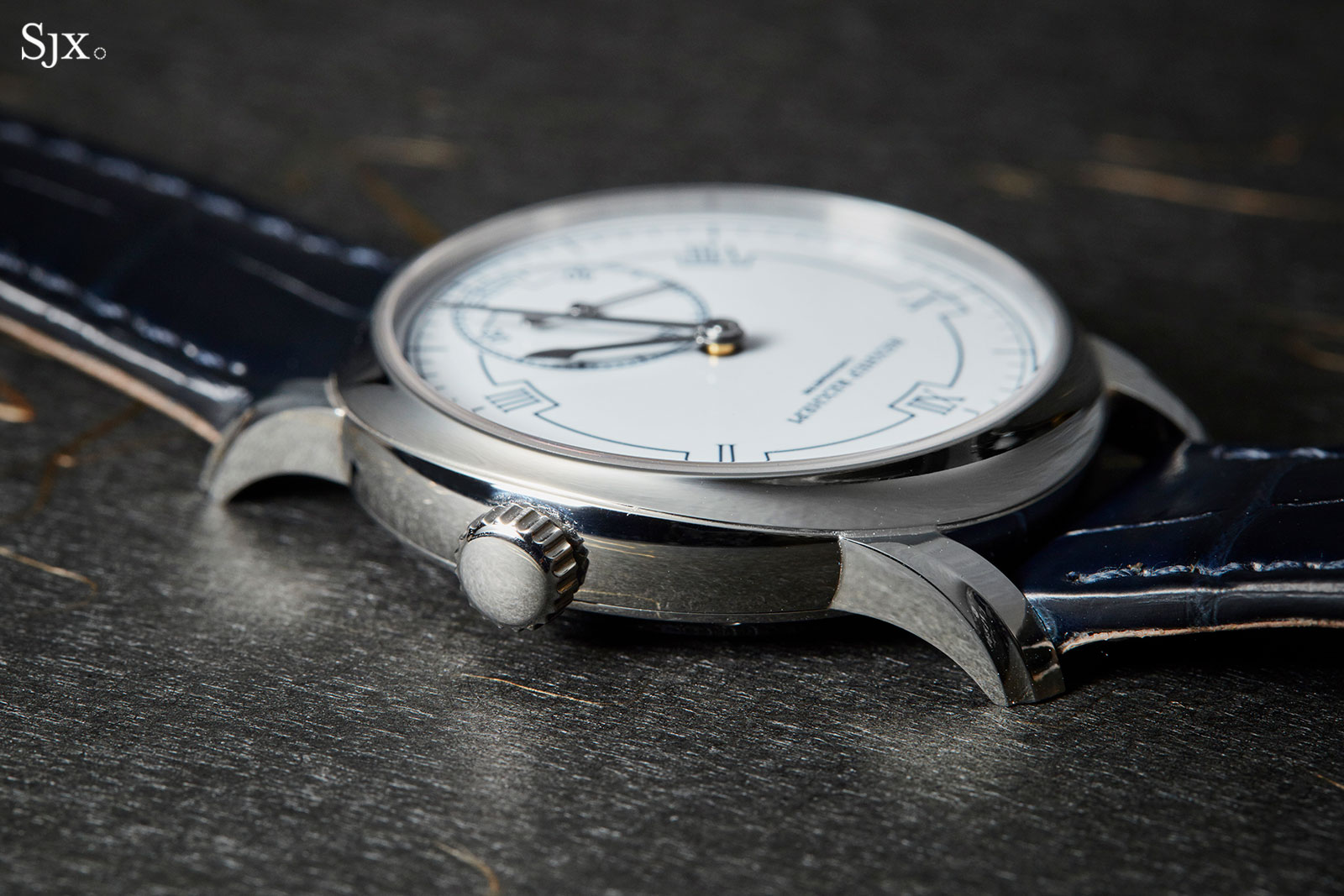
The good bit
The movement inside is the cal. RR-01, named after Rexhep’s initials. It was designed and constructed in-house, and based on the calibre that made its debut inside the AK-06 launched last year. Most of the components are produced by suppliers, and then finished at the Akrivia workshop in Geneva’s Old Town, though Rexhep is working towards producing parts in-house.
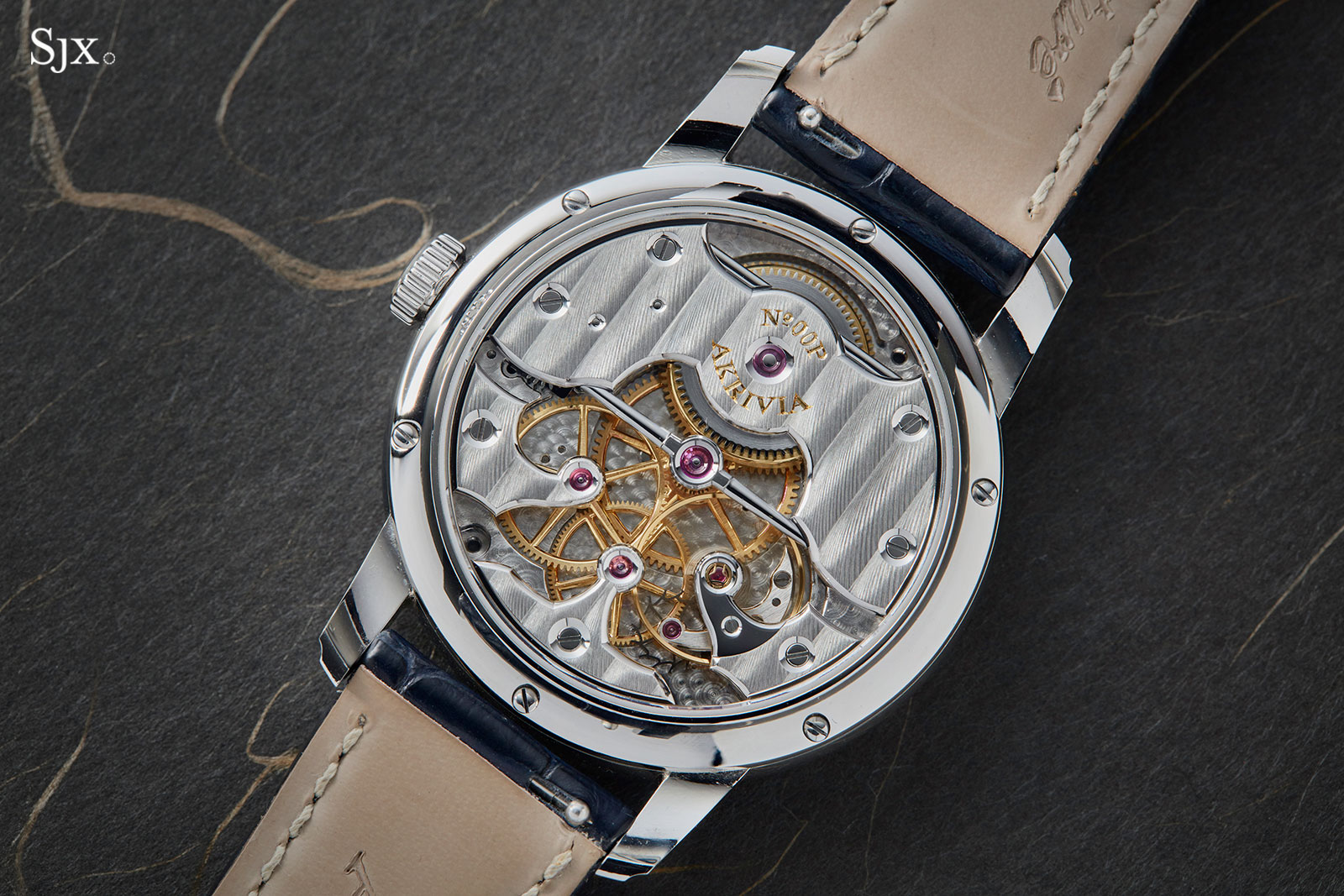
The RR-01 has several interesting features. Despite the relatively small size – 30mm or 13”’, which is the same size as the Valjoux VZSS or the Voutilainen cal. 28 – the power reserve is a lengthy 100 hours, achieved with a single barrel.
Additionally, the movement features a hacking, zero-reset seconds. When the crown is pulled to set the time, the seconds hand resets to 12 o’clock and stops. This is accomplished with a heart-shaped cam and lever, the conventional approach to the feature.
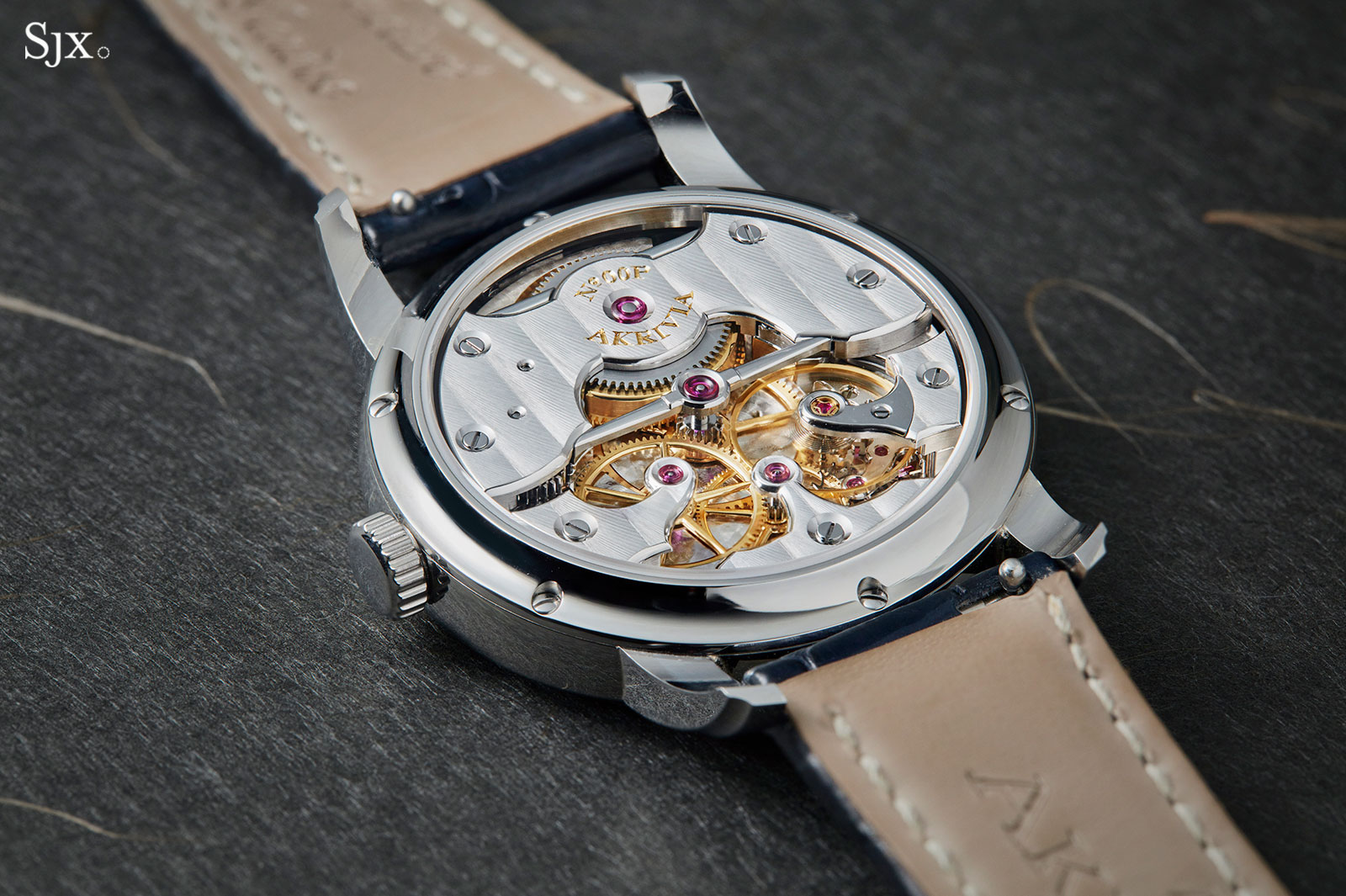
Visually the movement layout is symmetrical, a feature of nearly all of Akrivia’s movements to date (even those made by third parties). Symmetrical movement construction is actually uncommon in watchmaking, a straightforward idea that is less straightforward to implement.
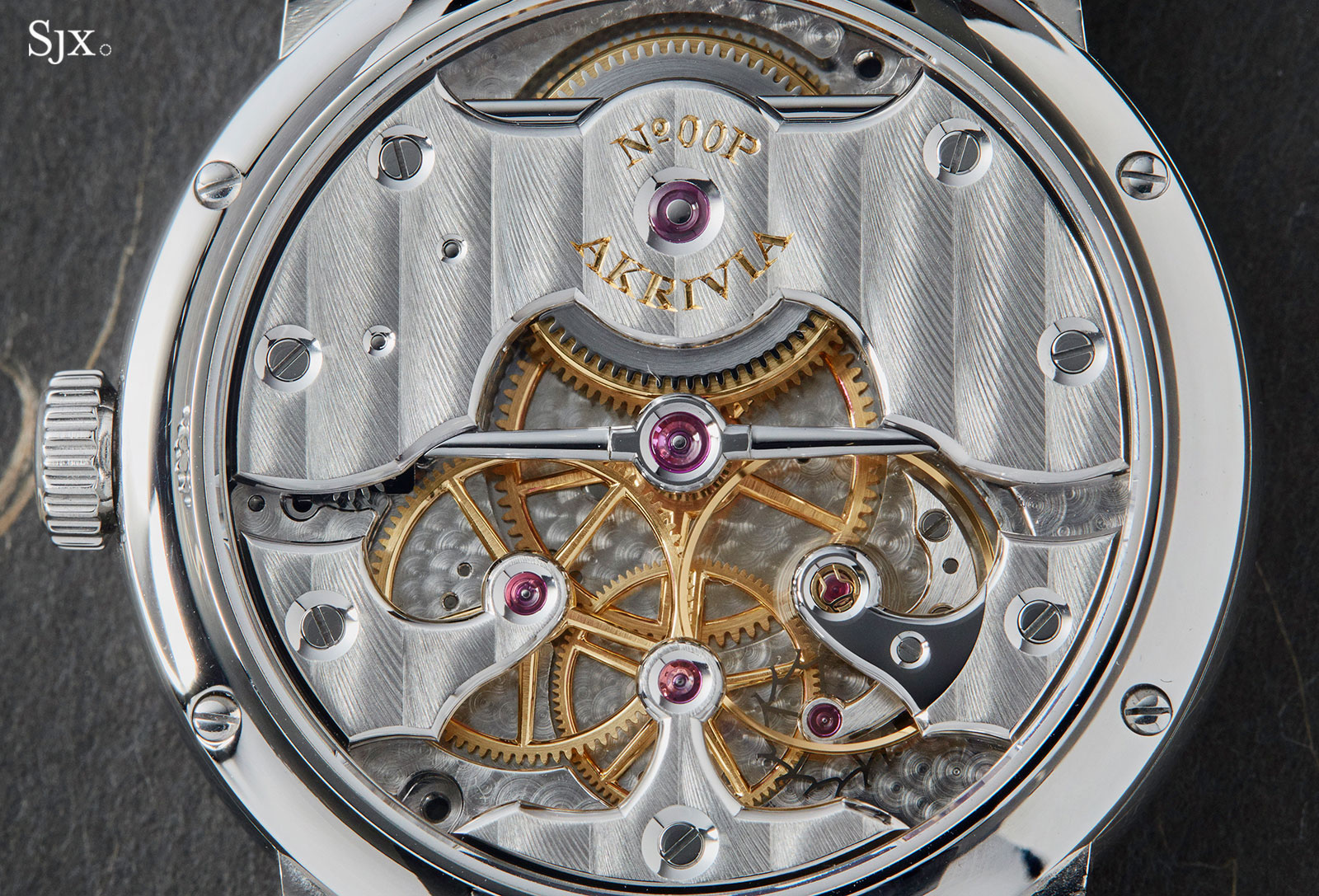
Arguably the foremost practitioner of symmetrically constructed movements is Francois-Paul Journe, with his Resonance cal. 1499 being almost perfectly symmetrical. Even the symmetric cal. 1304 in the Chronometre Souverain is strikingly balanced visually.
The most striking quality of the RR-01 is its almost exaggerated style of movement finishing. The cocks for the balance and wheel train feature anglage on steroids, with as many sharply pointed chamfered edges as could be reasonably included.
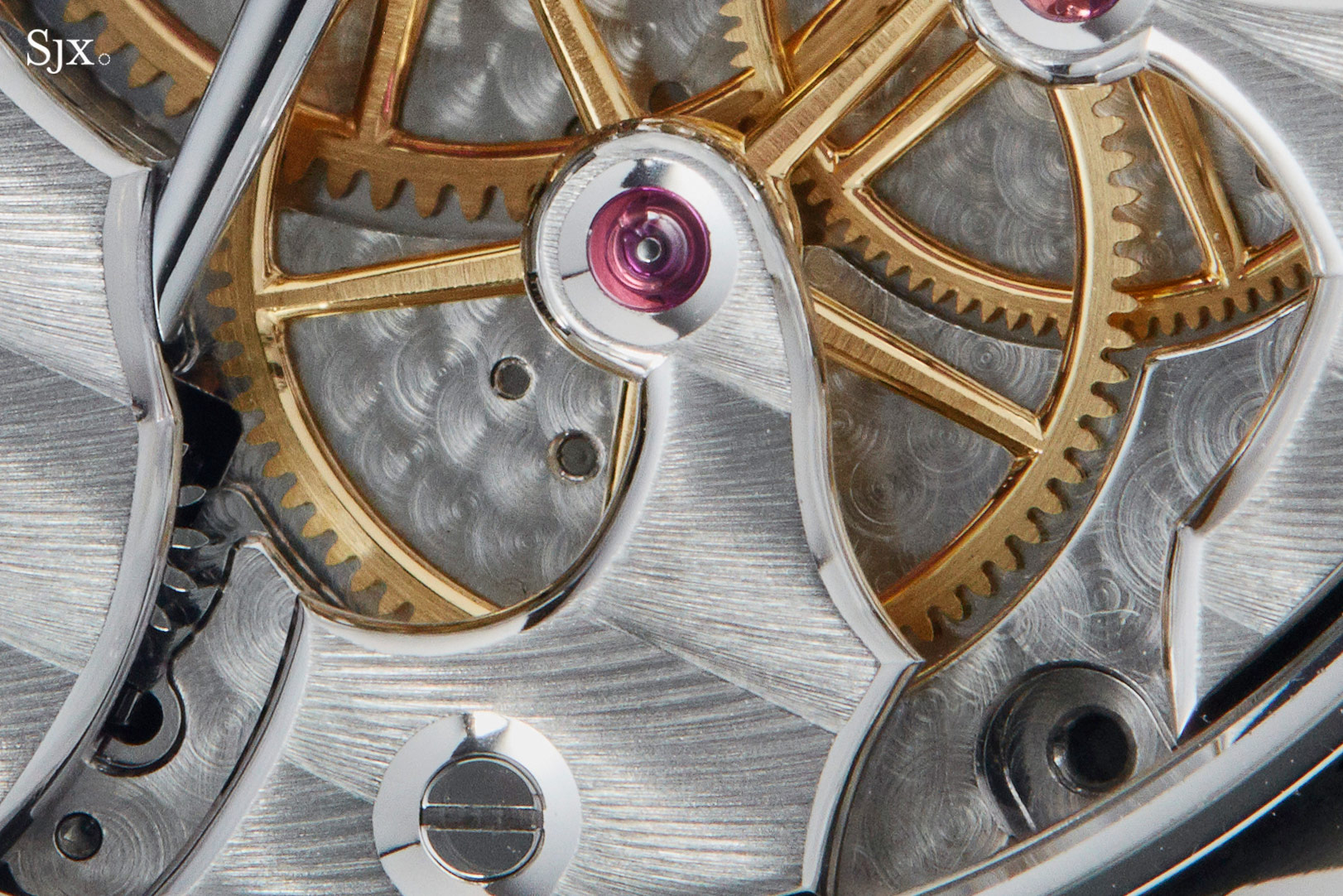
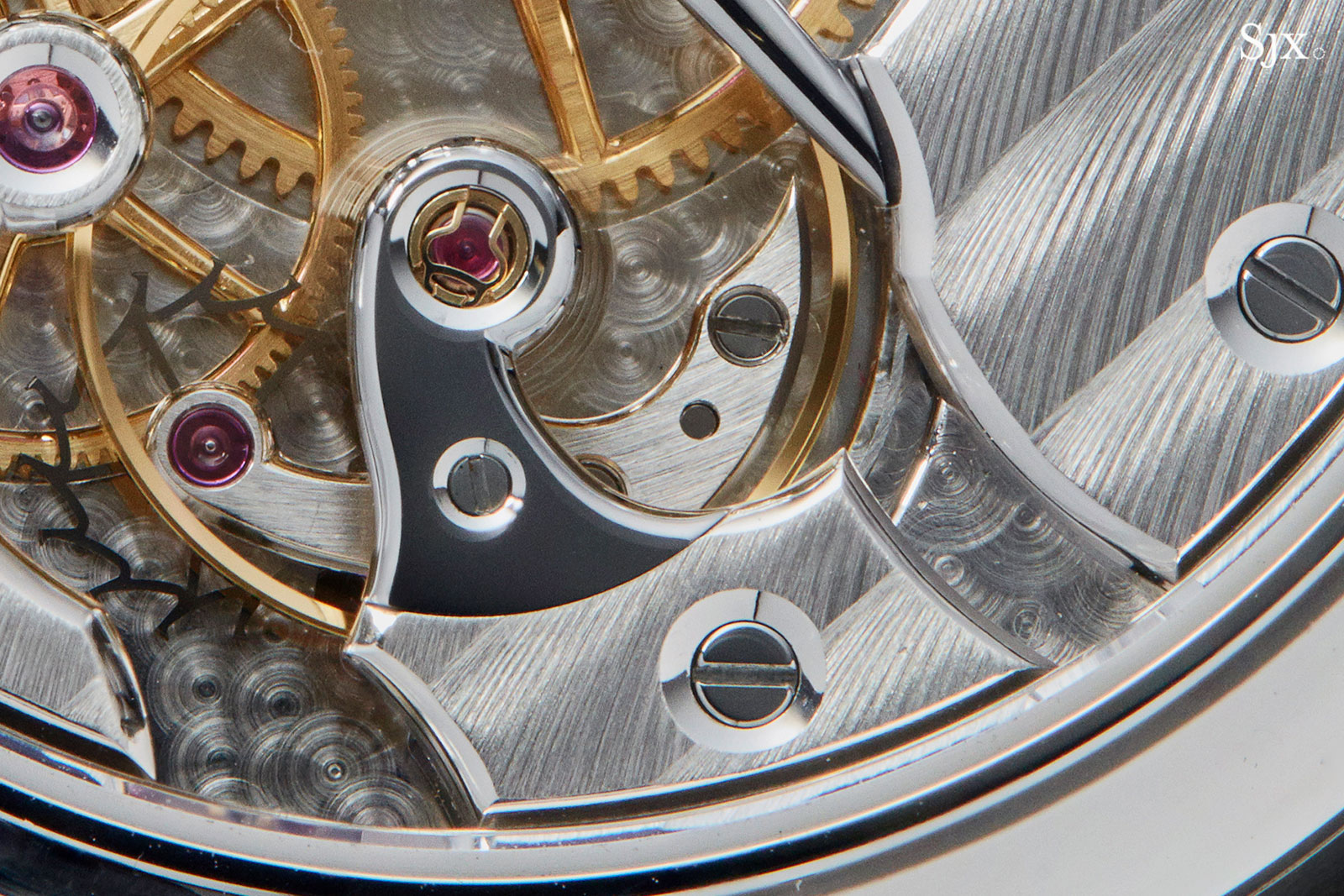
The same holds true for the balance bridge, which is further enhanced by a bar-shaped winding click that intriguingly runs under the bridge to preserve the movement symmetry.
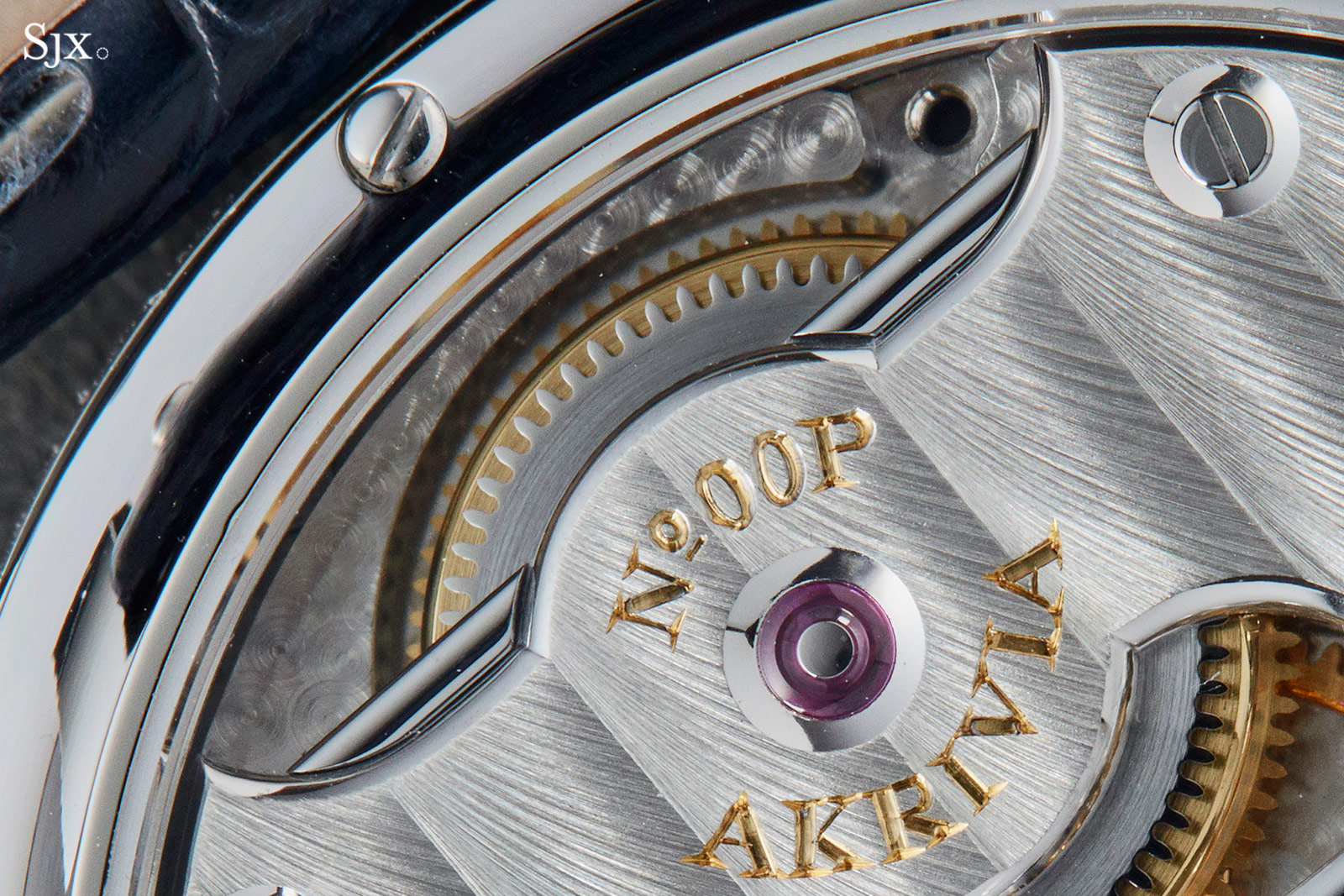
Even the finer details of the bridges are accentuated. The polished countersinks for the jewels and screws are mirrored, bowl-shaped and larger than usual.
Right below sits the steel bridge for the centre wheel. Elongated, rounded and tapering towards its ends, the bridge is of the form typically used for a tourbillon carriage. This is black polished, as are the other steel parts, like the cap for the balance cock.
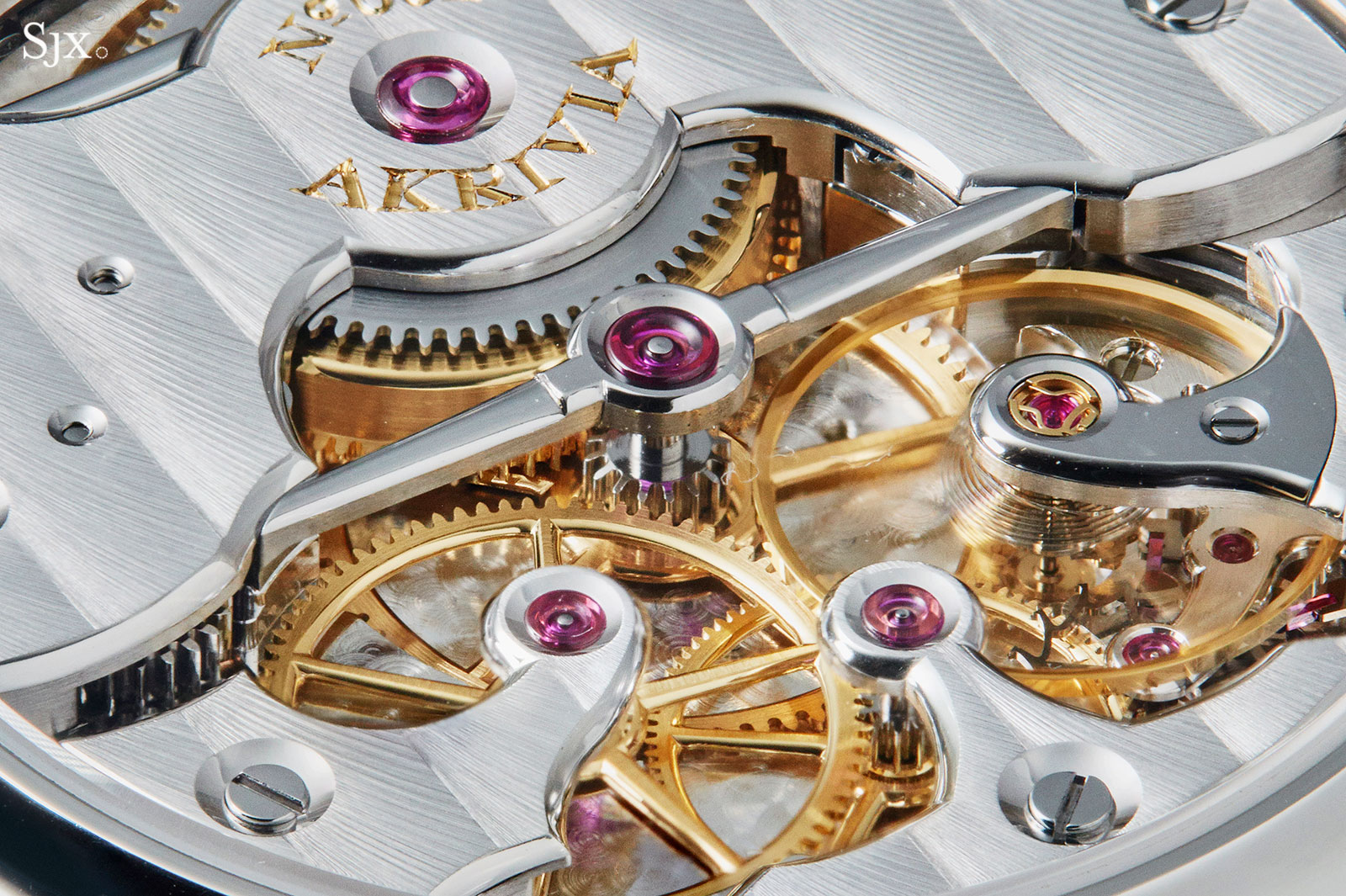
The balance wheel is large and free-sprung, fitted with four adjustable masses on each spoke.
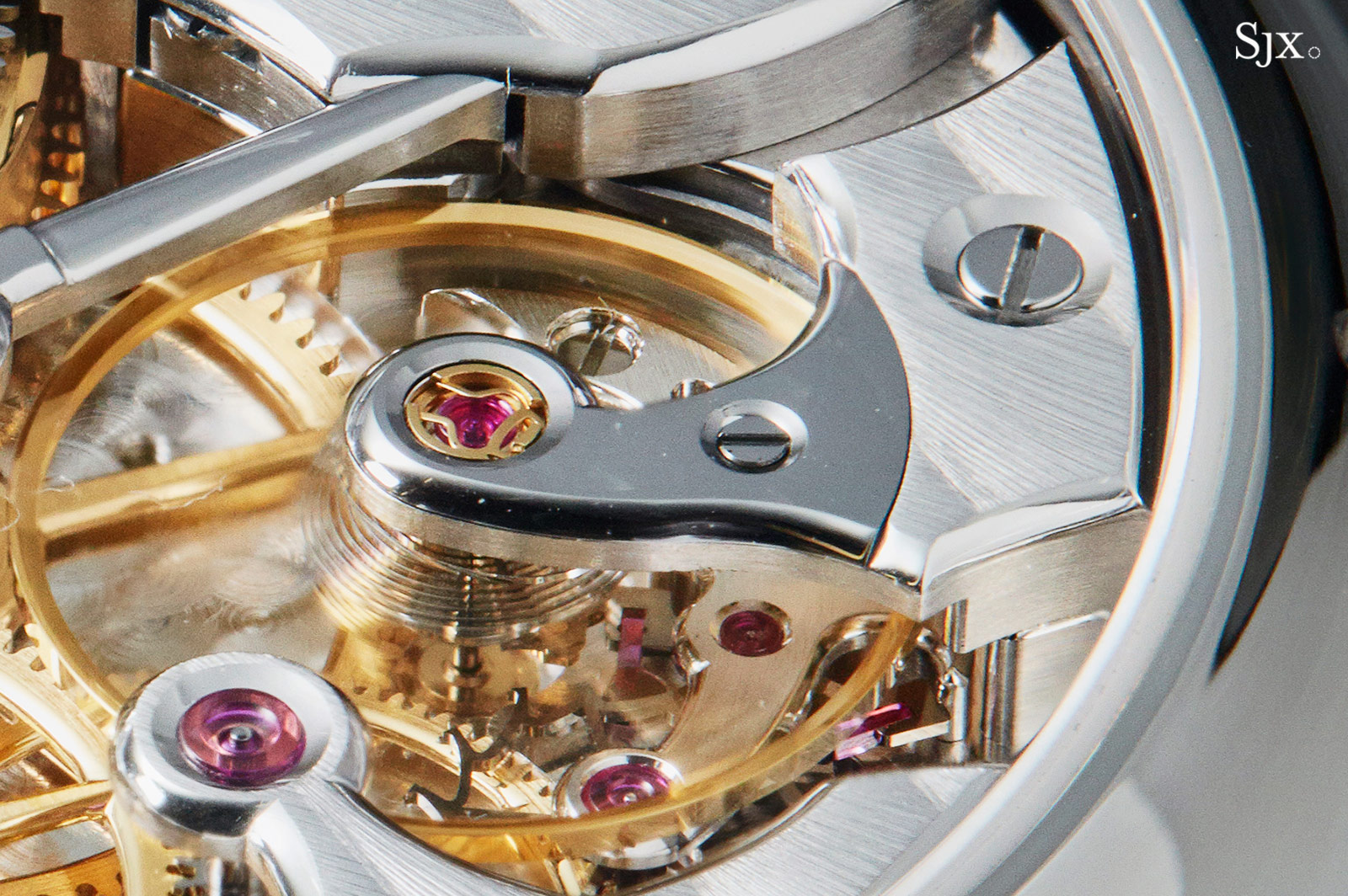
The barrel bridge, cocks and base plate are rhodium-plated German silver. While Rexhep is debating different plating colours for the plates, Cotes de Geneve will likely be the only surface decoration offered.
According to Rexhep, a frosted finish (which is the only viable alternative for a watch of this quality) is more prone to oxidise or stain over time if moistures enters the case or as the result of careless handling during servicing. Geneva stripes, on the other hand, is a more robust finish.
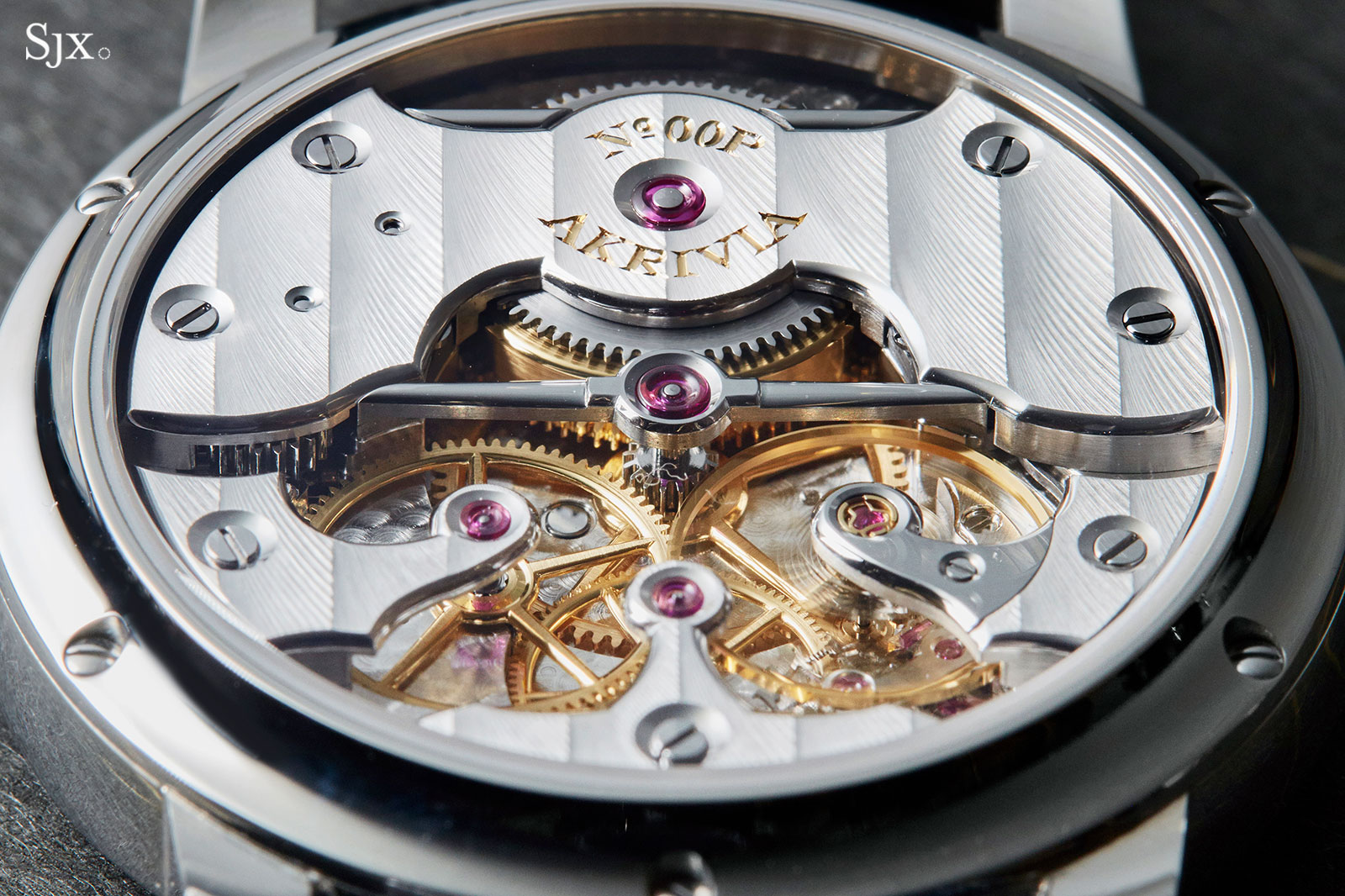
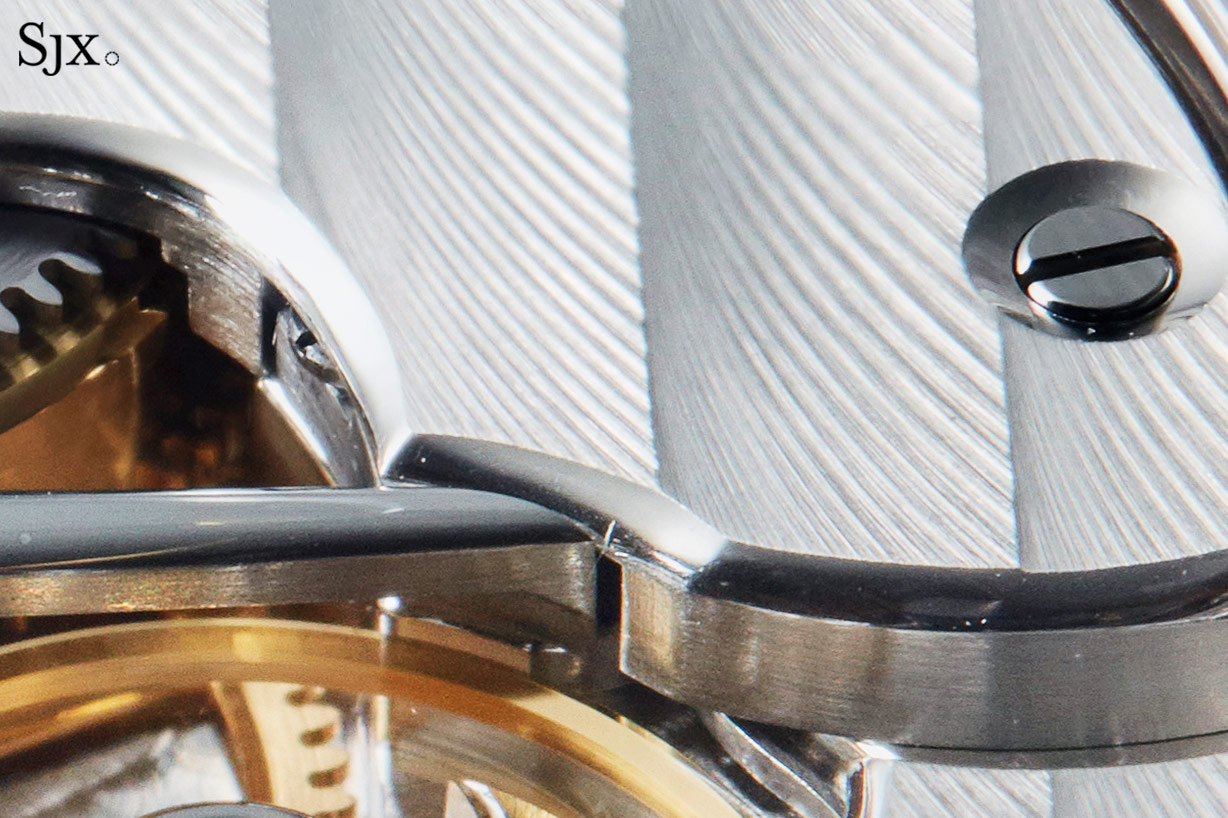
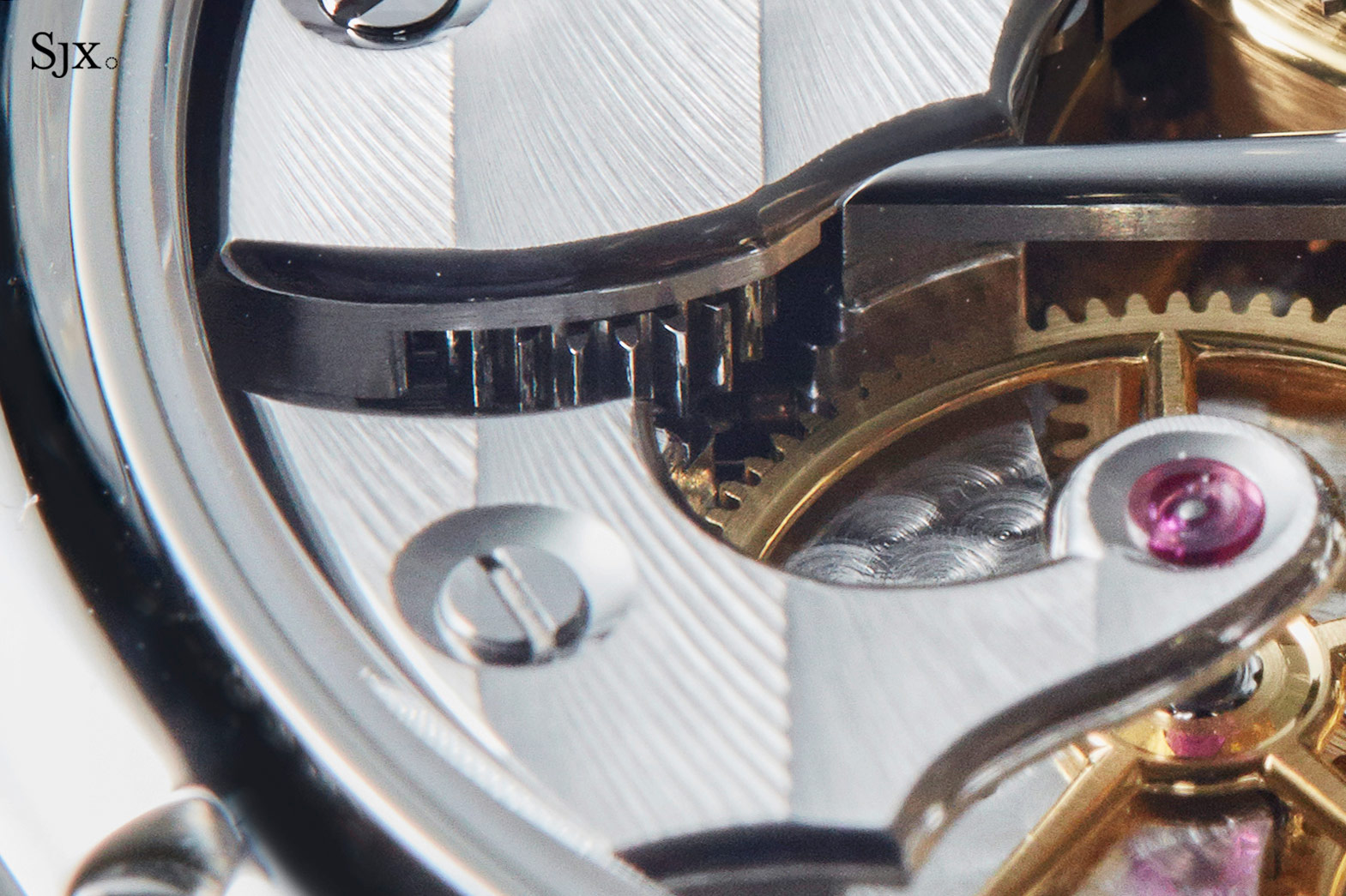
As they are, the prototypes are finishing to an exemplary standard, though not a flawless one. Small but important details, like chamfered slots for the screw heads, the finish of the pallet fork, or consistent graining of the perlage on the base plate, will be refined as much as humanly possible according to Rexhep.
It’s too early to say if the Chronometre Contemporain will join the likes of the Philippe Dufour Simplicity and Roger W. Smith Series 2 in the Valhalla of modern day watchmaking but the Rexhepi brothers are young and may yet one day ascend.
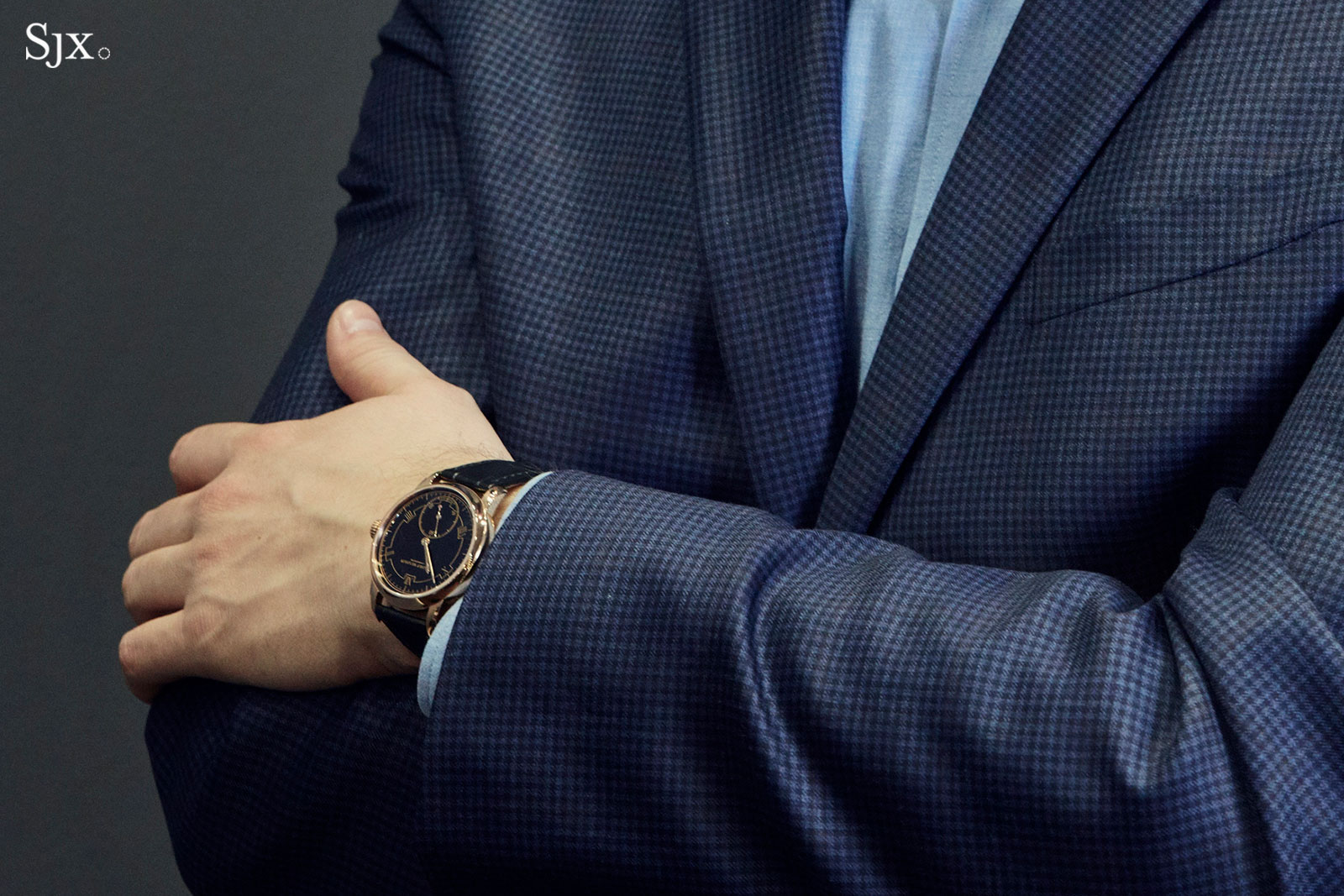
Price and availability
The Chronometre Contemporain will be available in 18k rose gold or platinum. The price is forecast to be SFr55,500 in gold and SFr58,000 in platinum. A Besançon Observatory testing certificate is an option for a modest extra fee. Delivery is uncertain but might happen towards the end of 2018.
Back to top.

